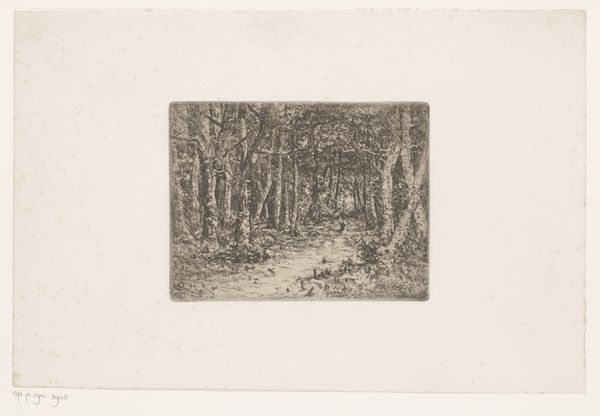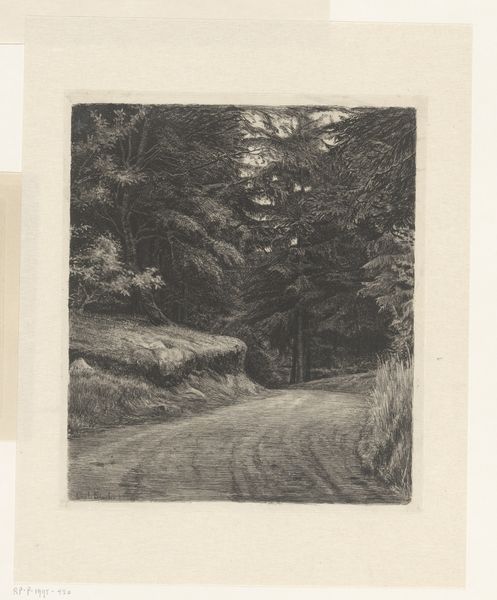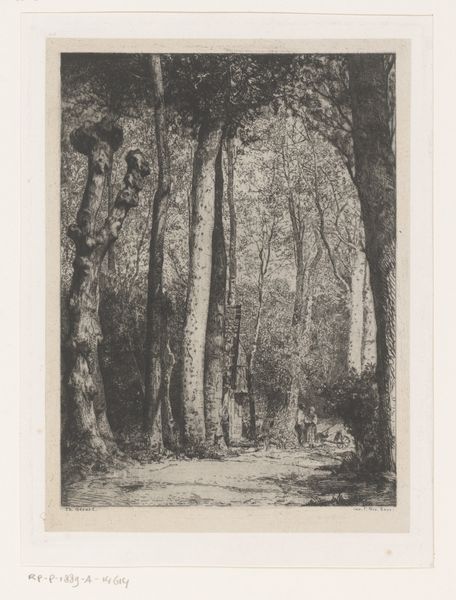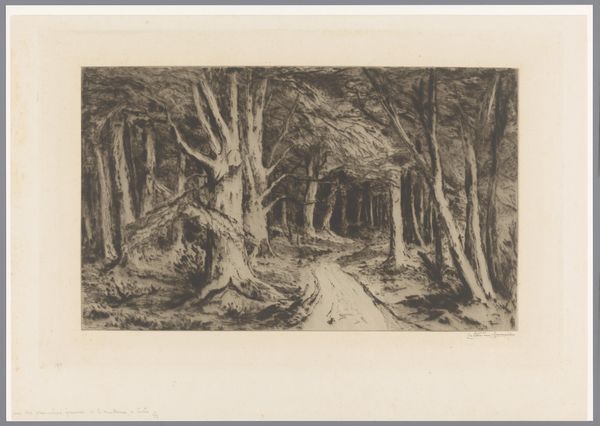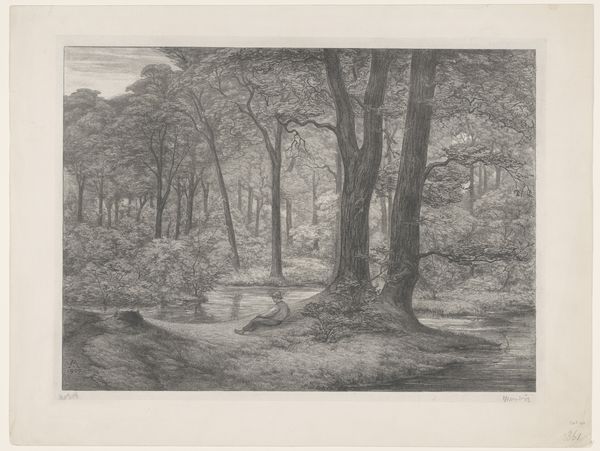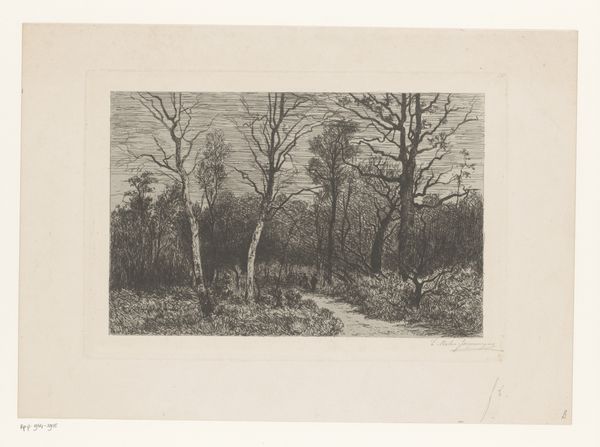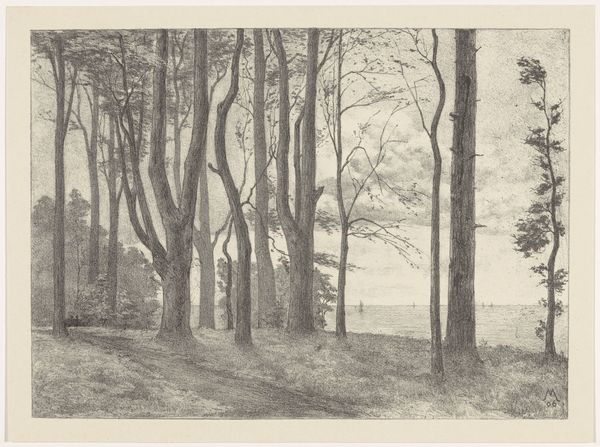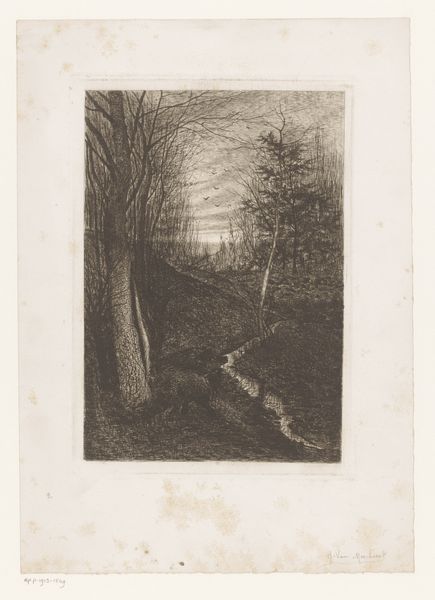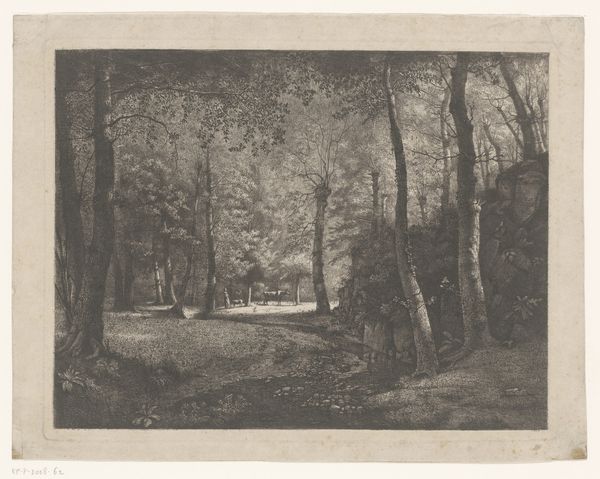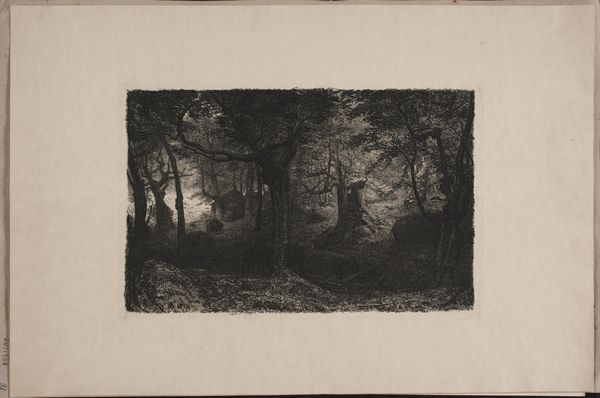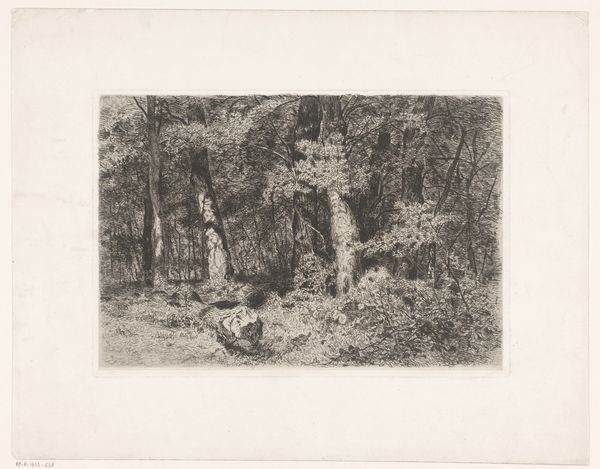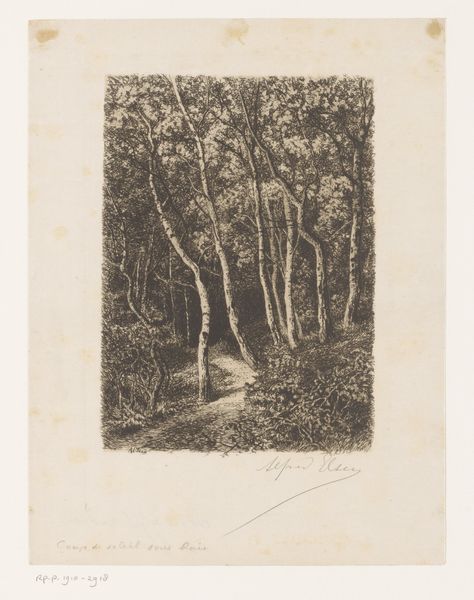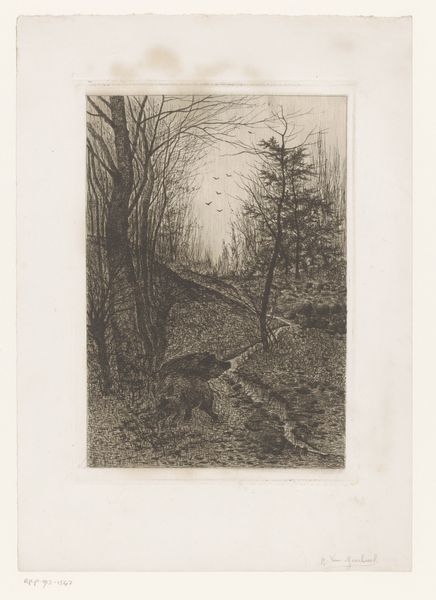
Dimensions: height 162 mm, width 264 mm
Copyright: Rijks Museum: Open Domain
Carel Nicolaas Storm van 's-Gravesande made this etching called 'Bosrand bij Kelheim', or 'Edge of the Woods near Kelheim', presumably in the late 19th century. Here we see a path winding its way through a dense forest. But what does it mean to depict nature in this way? By the late 1800s, industrialization was changing the landscape of Europe. Artists, like Storm van 's-Gravesande, were turning to nature as a way to critique this rapid change. The etching evokes a sense of longing for a simpler time, untouched by the modern world. In doing so, this piece speaks to the growing environmental consciousness of the time. To understand this piece, we can look at art criticism, historical documents, and social movements. The meaning of art is always tied to its social and institutional context.
Comments
No comments
Be the first to comment and join the conversation on the ultimate creative platform.
